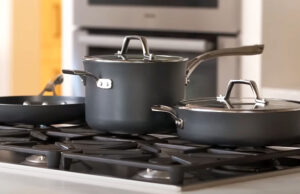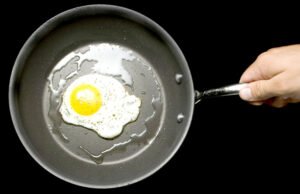As an Amazon Associate, I earn from qualifying purchases at no extra cost to you.
Maytag Dishwasher Troubleshooting Codes: Easy Fixes!
Have you ever seen strange codes flashing on your Maytag dishwasher and felt stuck? These codes can be confusing, but they actually tell you exactly what is wrong. In this article, you will learn simple ways to read the code and fix the issues. With clear explanations and easy steps, you can get your dishwasher working again fast without stress.
Understanding Error Codes on Maytag Dishwashers
Maytag dishwashers have special codes that appear when something is not working right. These codes help you know the problem without opening the machine.
The codes are usually letters or numbers like F1, F2, or E1. Each code points to a specific issue, such as water not filling, a door problem, or a motor error. Knowing these codes saves time and prevents bigger damage.
For example, the F1 code usually shows a problem with the electronic control. It might need a reset or repair. The F2 code shows a water supply issue.
Sometimes, the dishwasher does not get enough water, or the water pressure is low. Checking the water line and cleaning filters can often fix it. Using the codes correctly helps you solve problems without calling a repair service.
Some codes appear only once or occasionally. These may be simple glitches in the system. Turning the dishwasher off and on can clear the error. If the same code comes back, it is likely a real problem that needs attention. Learning what each code means can feel tricky at first, but it becomes easier with practice. Always keep the user manual or a code chart nearby.
Keeping a list of common codes helps you act fast. F3 often means a heating problem. F4 shows a water drainage issue. E1 can be related to the temperature sensor. Knowing the differences is useful because each code has a different fix. You do not need technical skills, just patience and the right guide.
- F1: Electronic control error, may need reset
- F2: Water supply issue, check line and filters
- F3: Heating problem, inspect heating element
- F4: Drainage problem, check pump and hose
- E1: Temperature sensor error, inspect sensor
Checking Water Supply and Inlet Issues
Water supply problems are very common in Maytag dishwashers. Without water, the dishwasher cannot clean properly, and many error codes appear.
First, make sure the water valve under the sink is fully open. Sometimes it is only slightly open, and the machine gets low pressure. Next, check the inlet hose for kinks or bends that block water flow.
Filters inside the dishwasher can get clogged with food debris. Cleaning these filters regularly helps water flow and avoids errors. Remove the filter gently, rinse it under running water, and replace it. If you notice small particles, a soft brush can remove them. This small step prevents major water supply errors over time.
Also, check the float switch, a small part that tells the dishwasher if it has enough water. If it is stuck or dirty, the dishwasher may not fill correctly. Lift it up and down to make sure it moves freely. Clean around it to remove any debris. A working float switch ensures the dishwasher fills safely without triggering a code.
Sometimes the water inlet valve itself can fail. If you notice that water is not entering even after cleaning filters and checking hoses, the valve may need replacement. This is easy to do for most people. Turn off the water, remove the old valve, and install a new one. Make sure all connections are tight before testing.
- Open water valve fully
- Check hoses for bends or kinks
- Clean dishwasher filters
- Inspect float switch for debris
- Replace inlet valve if water does not flow
Fixing Drainage Problems
Many error codes happen because the dishwasher cannot drain water properly. This can be due to a blocked drain hose, clogged pump, or even food particles in the filter. Start by removing the hose and checking for blockages. A long brush or a flexible wire can push out debris. Make sure the hose is not pinched behind the cabinet.
Next, check the drain pump, which pushes water out of the machine. Listen for strange noises when the dishwasher tries to drain. If it hums but does not move water, small objects might be stuck in the pump. Turn off the power, remove the pump cover, and clear any blockage. Safety is important, so always unplug before touching electrical parts.
Sometimes, the kitchen sink drain is slow. This can make the dishwasher back up. Run water in the sink to ensure it flows freely. If needed, unclog the sink drain with a plunger or drain cleaner. The dishwasher cannot drain well if the sink is blocked, so always check this first. Simple fixes here often solve drainage codes.
Finally, make sure the drain hose is at the correct height. If it is too low, water can flow backward into the dishwasher. The hose should rise to the bottom of the sink and then drop into the drain. This small adjustment prevents future errors and ensures smooth operation. Regular inspection keeps your dishwasher draining properly.
- Remove and inspect drain hose
- Check and clean drain pump
- Ensure sink drain is clear
- Adjust hose height to prevent backflow
- Test dishwasher drainage after cleaning
Solving Door and Latch Errors
The dishwasher door must close tightly for the machine to run. If the door latch is loose or broken, error codes appear. First, check the door for any visible damage. Make sure it lines up with the frame properly. A door that does not sit correctly can trigger codes even if everything else works.
Next, inspect the latch itself. Open and close the door several times to see if it clicks firmly. If the latch feels loose or broken, replace it. This small part is easy to remove and install. A secure latch ensures the dishwasher recognizes that the door is closed, allowing it to start the cleaning cycle.
Sometimes the door sensor, which tells the machine the door is closed, can fail. Check the wiring and clean any dirt around the sensor. If cleaning does not help, replacing the sensor is necessary. The dishwasher relies on this sensor for safety, and a working sensor prevents error codes and accidents.
Finally, check the hinges and spring mechanisms. If the door is misaligned, even a good latch may not work. Tighten screws and adjust the hinges if needed. Once everything is aligned and the latch is secure, the dishwasher should operate normally without door-related error codes.
- Inspect door for damage
- Test and replace latch if needed
- Clean or replace door sensor
- Check hinges and alignment
- Ensure door closes firmly
Heating and Water Temperature Fixes
Some codes, like F3 or E1, relate to heating or water temperature. Dishwashers need hot water to clean dishes properly. First, check that your water heater is working and set to at least 120°F. If water is cold, the dishwasher cannot reach the required temperature. This can trigger heating codes.
Next, inspect the heating element inside the dishwasher. It can wear out over time or get covered with mineral deposits. Clean the element carefully, or replace it if it is broken. A working heating element ensures dishes come out clean and the dishwasher runs without error codes. Simple care can prevent costly repairs.
Temperature sensors also play a role. They tell the dishwasher if the water is hot enough. A faulty sensor gives wrong readings, causing error codes. Check connections and clean the sensor area. If needed, replace the sensor. Proper temperature helps detergent work efficiently and keeps your dishwasher running smoothly.
Finally, run a test cycle after any repairs. Observe if the dishwasher heats the water properly. If the code does not appear, the problem is solved. Regular maintenance of the heating system keeps the dishwasher performing well and avoids repeated errors.
- Ensure water heater is set to correct temperature
- Inspect and clean heating element
- Check and replace temperature sensor
- Run a test cycle to verify fix
- Maintain heating system regularly
Resetting the Dishwasher and Control Board Issues
Many minor error codes can be fixed by resetting the dishwasher. Turn off the power at the circuit breaker for at least one minute. Turn it back on and start a cycle. This often clears temporary glitches in the control board. It is the easiest first step before any repair.
If errors continue, the electronic control board may have a problem. This board controls all the dishwasher functions. Inspect it for burned spots or loose wires. Sometimes, a simple reseating of the connections solves the problem. If the board is damaged, replacement is necessary. Use the exact model number to get the right part.
Always handle the control board carefully. Static electricity can damage it. Wear gloves or touch a metal surface to discharge static before working. A working control board is essential for all cycles, from washing to draining. Proper handling ensures long life and fewer errors.
Finally, keep the dishwasher clean inside and out. Grease or moisture on the control panel can cause issues. Wipe the panel regularly and avoid spilling liquids. Maintaining cleanliness supports the electronics and prevents frequent codes. A reset combined with proper care often solves multiple issues.
- Power off and reset dishwasher
- Inspect control board for damage
- Reseat or replace connections
- Handle board safely to avoid static
- Keep panel and interior clean
Final Thoughts
Maytag dishwasher codes can feel scary at first, but they are helpful guides. By learning what each code means and following simple fixes, you can save time and money. Water supply, drainage, door, heating, and control issues all have clear solutions. Regular maintenance and quick action prevent most problems. With patience and care, your dishwasher will run smoothly and efficiently every day.
| Error Code | Problem | Quick Fix |
|---|---|---|
| F1 | Electronic control error | Reset or replace board |
| F2 | Water supply issue | Check hose, valve, filters |
| F3 | Heating problem | Check element and heater |
| F4 | Drainage problem | Clear pump, hose, sink |
| E1 | Temperature sensor | Clean or replace sensor |
Frequently Asked Questions (FAQs)
Is it normal for Maytag dishwashers to show codes sometimes?
Yes, it is normal for some codes to appear occasionally. Sometimes, small glitches in the system can trigger a code. Turning the dishwasher off and on can reset it. However, if the code appears repeatedly, it usually signals a real problem. Checking the water, drainage, door, heating, and control parts helps identify the cause. Observing the code patterns can prevent bigger damage.
Can I fix water supply codes myself?
Yes, most water supply issues can be fixed at home. Check the water valve to ensure it is open. Inspect hoses for kinks or blockages. Clean the filters inside the dishwasher. Make sure the float switch moves freely. If water still does not enter, you may need to replace the inlet valve. Simple tools and patience are enough for these fixes.
Do I need a professional for drain problems?
Not always. Many drainage problems are easy to fix. Remove and clean the drain hose and pump. Check the sink drain for clogs. Adjust the hose height if water flows backward. Only call a professional if the pump or hose is damaged. Most blockages and minor issues can be handled by homeowners with basic tools.
Is it safe to replace the heating element myself?
Yes, it is safe with precautions. Turn off power and water before starting. Remove the old element carefully and install the new one. Check for loose connections and clean any mineral buildup. Make sure the element fits your specific dishwasher model. Following instructions and safety rules ensures a successful repair without accidents.
Can a faulty door latch stop the dishwasher completely?
Yes, a bad latch prevents the dishwasher from running. The machine will detect the door as open and stop operation. Inspect the latch for damage or looseness. Replace it if necessary. Also, check the door sensor and hinges. A properly closing door with a secure latch ensures safe and complete cycles.
Do I need to reset the control board often?
No, you do not need to reset it frequently. Only reset the board when an error code appears or after maintenance. Constant resets do not fix hardware issues and may indicate a deeper problem. Resetting helps clear temporary glitches and can solve minor errors quickly. Use it as a first troubleshooting step before replacing parts.
Can temperature sensor errors be serious?
Yes, they can affect cleaning performance. If the sensor gives wrong readings, the dishwasher may not heat water enough. This leads to poor cleaning or error codes. Inspect and clean the sensor first. Replace it if cleaning does not help. Correct temperature ensures detergent works properly and prevents repeated errors.
Is it necessary to check all codes every time they appear?
Yes, it is important to identify the cause of each code. Some codes signal minor glitches, but others indicate real issues with water, heating, drainage, or electronics. Checking the codes helps prevent damage and costly repairs. Keep a chart or guide for quick reference. Acting early keeps the dishwasher in good condition.




